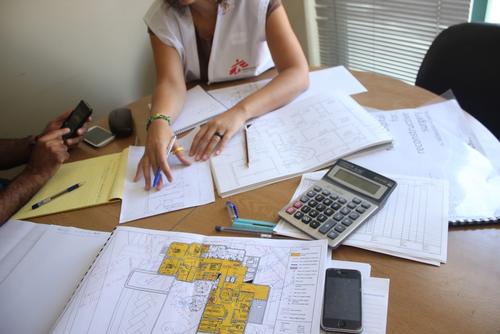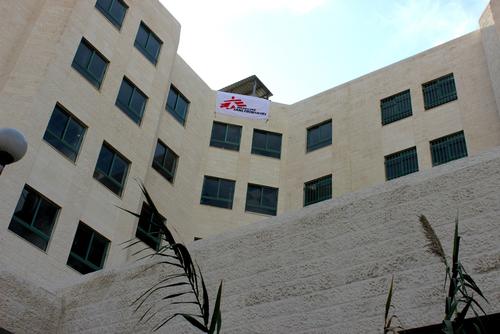Amman - After months of intensive work, the new Médecins Sans Frontières (MSF) specialized reconstructive surgery hospital for war victims from the Middle East and North Africa region is almost ready to run. It will be the largest hospital for the treatment of war victims from the region free of charge.
Renovation and construction has been ongoing at the 150-bed, 8 floor hospital since June 2014, and is expected to be completed early in 2015. MSF’s architectural, logistics and medical teams have been working hard to ensure that the structure meets the highest standards, providing the right facilities for the treatment of patients, as well as a suitable environment for their recovery and rehabilitation.
MSF’s decision to enhance the Amman reconstructive surgery project by moving into a new hospital came after years of discussion on how to cope with the demand resulting from the continuing unrest across the region. At the same time, this comes as a step to improve the quality of the medical and non-medical services provided to war victims from the region, and their caretakers.
The project will continue to provide the same surgical specialities: orthopaedic, plastic and maxillo-facial. However, working conditions, sterilisation and the overall environment in the new hospital will be improved, giving greater potential for adding new surgical activities in the future, and providing a better environment for treating infected patients.
“MSF has been experiencing the challenge presented by multidrug resistant bacteria in this project,” said Dr. Rasheed Fakhri, MSF Surgical Coordinator in Amman. “About half of orthopaedic and maxillo-facial patients arriving to the Amman project come with a multidrug-resistant infection. So, the sterilized environment and isolation capacity in the new hospital will surely allow us to improve the management of these many infected cases.”
All activities of the Amman reconstructive surgery project, including accommodation between surgeries, will be centralized in one new and well-equipped building. In addition to that, moving to the new hospital will allow MSF to open new doors and develop expertise in hospital management, as well as promoting partnerships with the scientific community.

"The hospital will be bigger than the one we are using currently in Amman and will definitely allow us to have an additional number of beds, as well as to increase the medical capacity,” says Marc Schakal, MSF Head of Mission for Jordan and Iraq. “However, the ultimate objective is not to increase the capacity as much as to provide better treatment and better management of the patient flow. We will be able to keep patients who need inpatient care longer, instead of discharging them because of lack of space. We will also improve and optimise operating theatre use as we have a third operating theatre.”
He continued: “We do more than just treating a wound or an injury. We try to help the patient, to the maximum extent possible, to recover functionality and reduce handicap resulting from the wound. It is quite a unique project in many ways, within MSF and anywhere else.”
At its project in Amman, MSF has been treating adults and children from across the Middle East and North Africa region who have been badly wounded in war and unrest. They have severe, complicated injuries that were not treated right away or could not be treated properly in their own country. At the Amman project they receive specialized surgical care, physiotherapy and psychological support. Since the project started in 2006, more than 3,700 patients from Iraq, Syria, Yemen, Gaza, Egypt, and Libya have been treated at the project. Patients stay for an average of six months, sometimes up to two or three years, while they undergo a program of complex surgery and rehabilitation.



